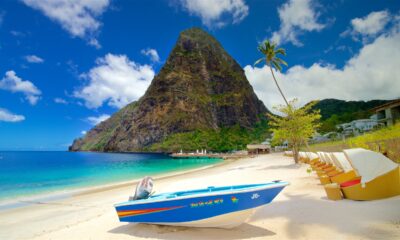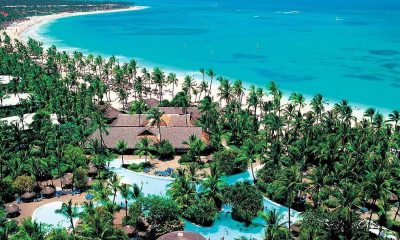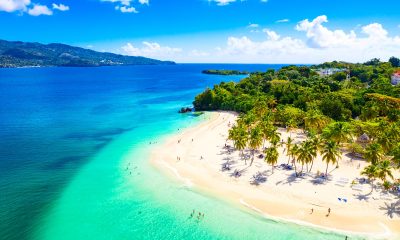Travel
Best Tourist Attractions In Guadeloupe: Places To Visit In Guadeloupe
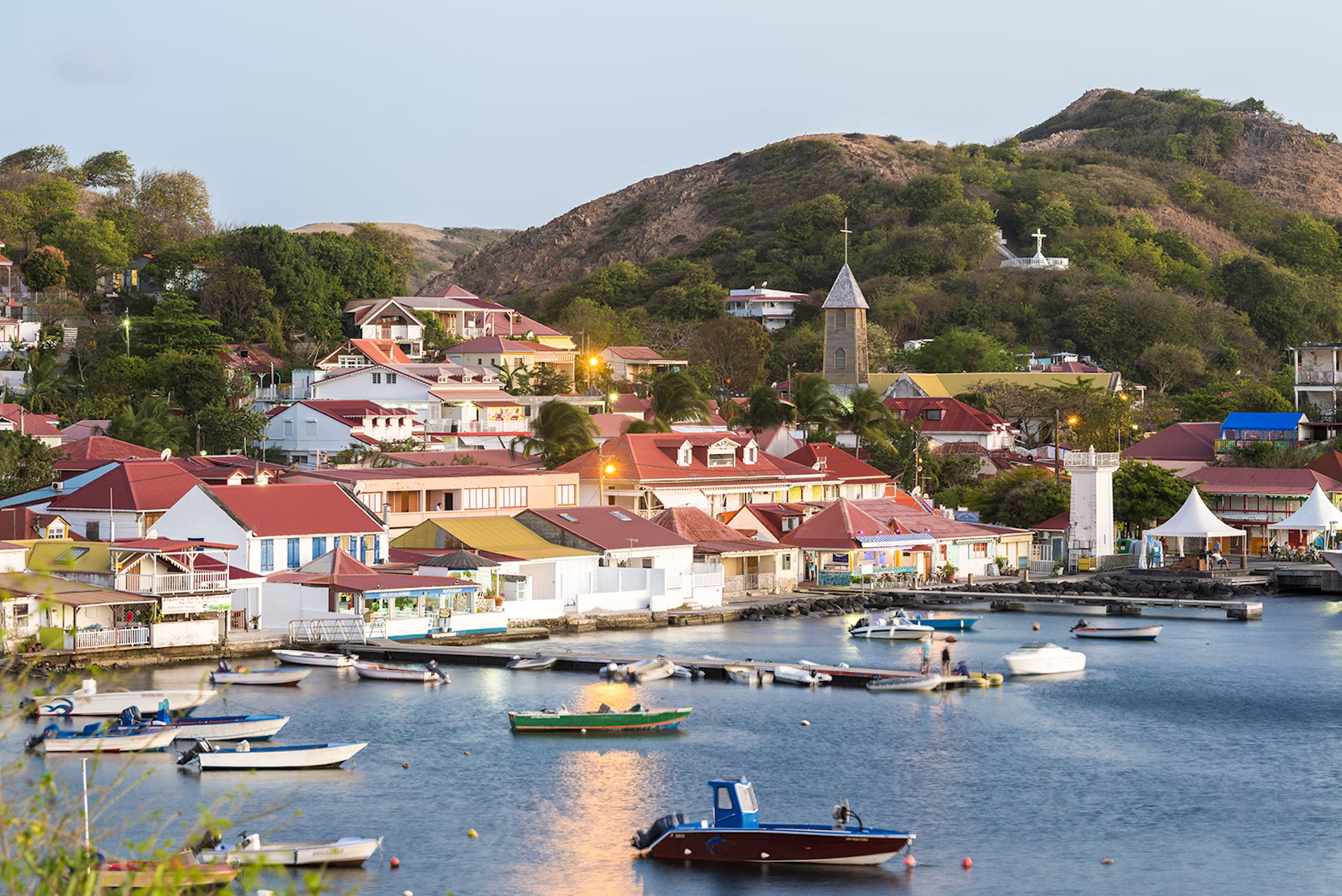
Beautiful scenery with Creole and French culture make Guadeloupe a beautiful place to visit. Guadeloupe’s food, language, culture, sights, and activities reflect its French heritage.
Palm-fringed beaches surround the coast, and waterfalls, hot springs, and an active volcano dot the interior. The golden coasts of Grande-Terre and Basse-Terre are home to most Guadeloupe hotels and tourist attractions. Pointe-a-Pitre, Guadeloupe’s largest city and cruise port, sits on Grande-Terre’s south shore.
Guadeloupe’s smaller islands of La Desirade, Les Saintes (Îles des Saintes), and Marie-Galante have magnificent beaches and charming communities. All Guadeloupe islands provide great birding, photography, hiking, and water sports like snorkeling, swimming, and diving. Guadeloupe features various colorful celebrations and carnivals, including the five-day Mardi-Gras Carnival finishing on Ash Wednesday.
Wondering about the best places to visit in Guadeloupe? Check out our best Guadeloupe attractions and activities.
1. Sainte-Anne Beach, Grande-Terre
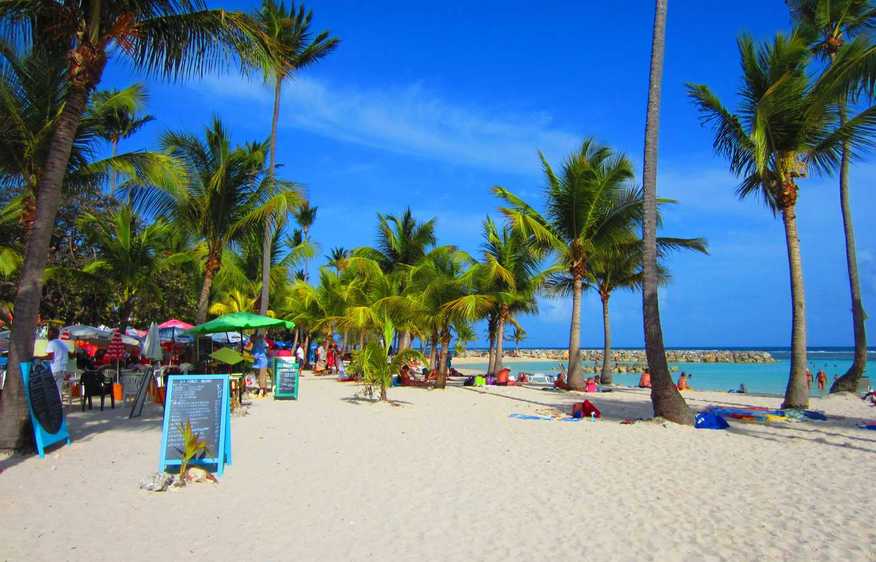
Palm-fringed Sainte Anne Beach is a Guadeloupe favorite. The beach is busy yet gorgeous, with white sand and shallow water in dreamy blues. The seaside promenade is a great place to walk.
Basking on this beach is a Grande-Terre highlight. Its calm seas make it a popular swimming spot. Beachside cafés and craft markets sell local goods.
Plage Caravelle, another magnificent beach with an offshore reef, faces Club Med La Caravelle to the west. One of Guadeloupe’s nicest beaches, it has fine white sand and blue water like a Caribbean holiday. The warm, shallow water and great snorkeling make this beach a family favorite.
Plage de Bois Jolan, to the east, is less busy than Sainte-Anne but requires you to carry your own food and drinks. Shallow water and soft sand make this beach another family favorite. Plenty of parking is another benefit.
2. Jacques Cousteau’s Underwater Reserve
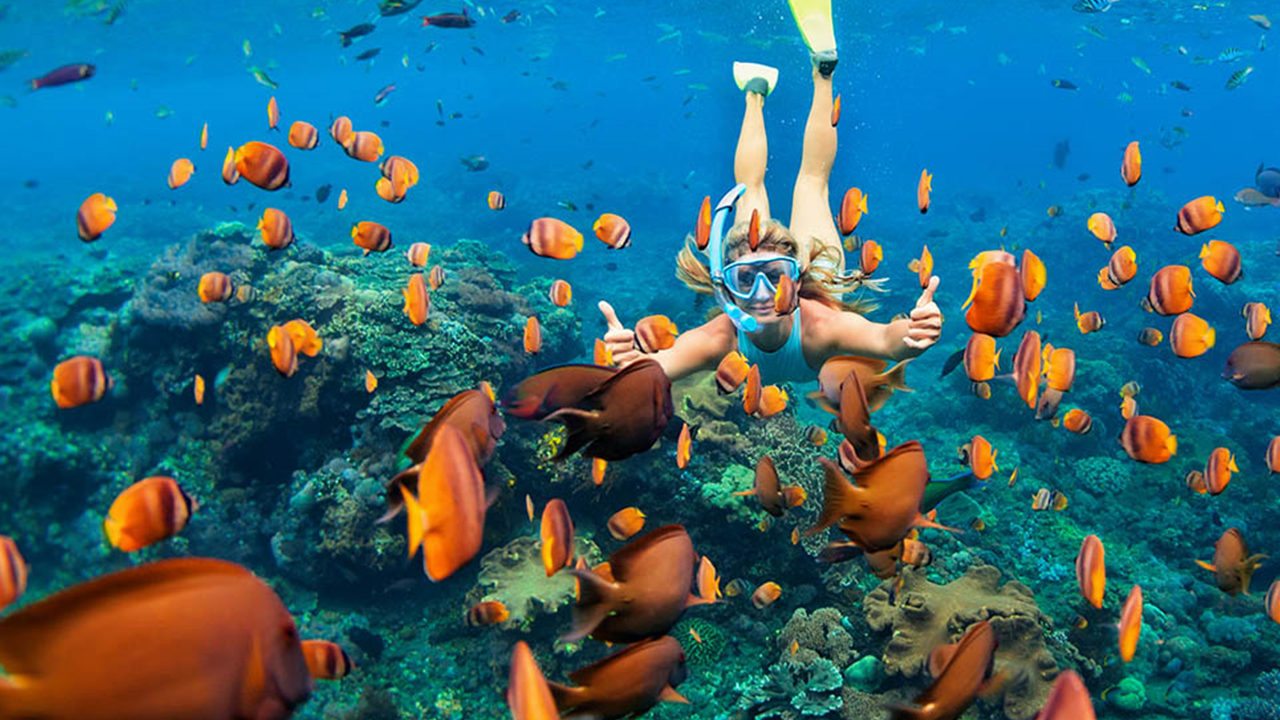
Pigeon Island is part of the Jacques Cousteau Underwater Reserve off Basse-Terre near Bouillante. Snorkel or see coral and marine life from a glass-bottom boat with dive operators for all skill levels.
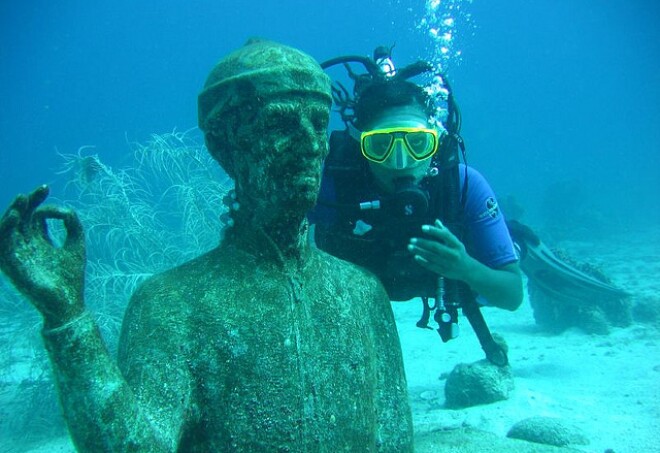
The reef has diminished in recent years, but you may still view big schools of fish and brilliant coral. Turtles, parrotfish, trumpetfish, and barracuda swim in coral gardens, which make good wall and wreck dives. You can kayak to the reserve from the mainland.
3. Jardin Botanique de Deshaies, Basse Terre
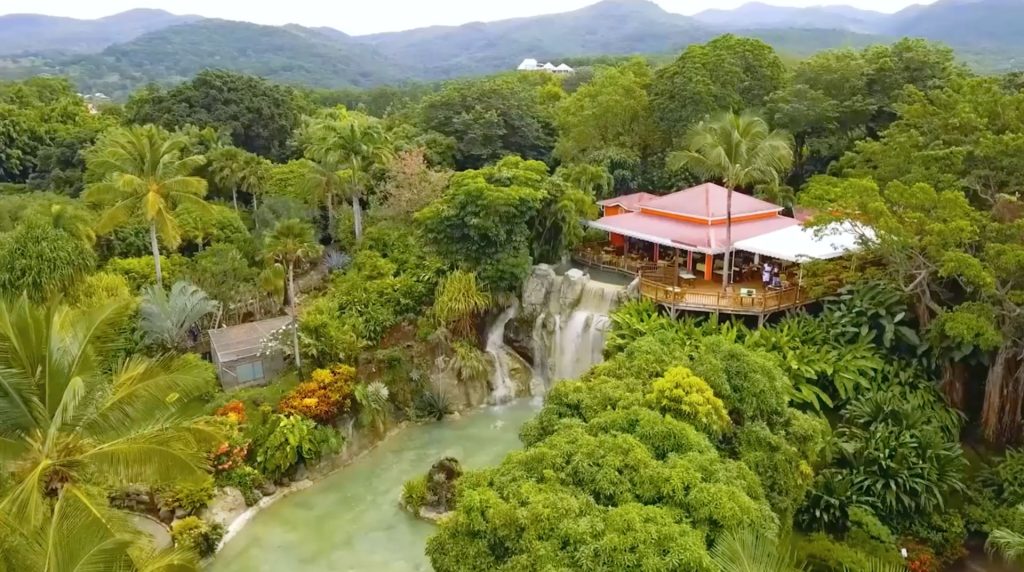
Location: Deshaies 97126, Basse Terre
Jardin Botanique de Deshaies, a tranquil botanical garden on Basse-Terre’s northwest coast, has tropical plants and numerous colorful birds. You can walk among cascades, lily ponds, and gazebos on bougainvillea-lined paths.
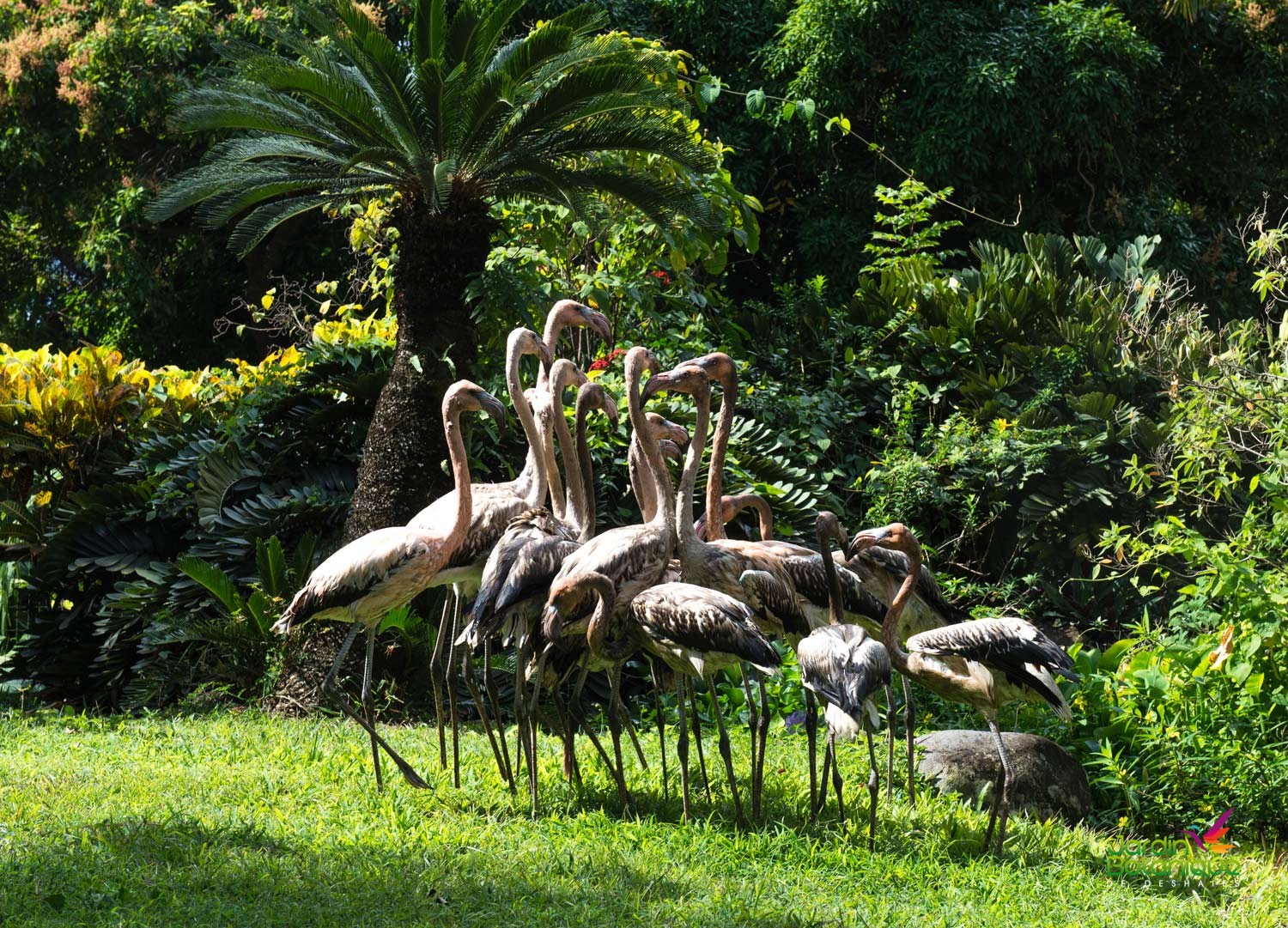
Children will appreciate seeing rainbow lorikeets land on their arms at the aviary. This fascinating attraction’s parrot village is another draw. Six little houses with beautiful macaws are here. Hilltop restaurants offer stunning views of the sea, gardens, and waterfalls when you’re hungry.
4. La Désirade
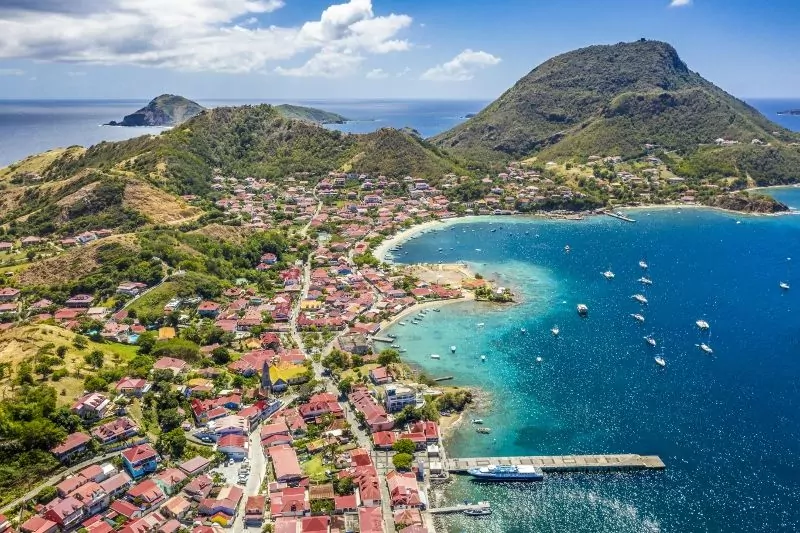
For tourists seeking solitude, La Désirade—French for “The Desired One”—lives up to its name. This beautiful island on Grande-Terre’s southeast coast is a 45-minute bumpy boat journey from Saint-Francois.
The oldest Lesser Antilles island, La Désirade, was a leper colony and made of tabular rock. The geological nature reserve exists today.
Coral reefs and palm-lined beaches like Fifi and Souffleur surround the island. Here, snorkeling, swimming, and diving are popular, and Le Morne du Souffleur’s hiking track gives stunning sea views. Your visit will include many iguanas and goats. Petite-Terre islands, two uninhabited natural reserves near La Désirade, are rich in biodiversity.
5. Pointe-a-Pitre Shopping

Pointe-a-Pitre, Guadeloupe’s largest town, has the finest deals. The Center Saint-John Perse and boutiques on Frébault, Nozières, and Schoelcher Streets offer French perfumes, jewelry, cosmetics, crystal, and fashion.
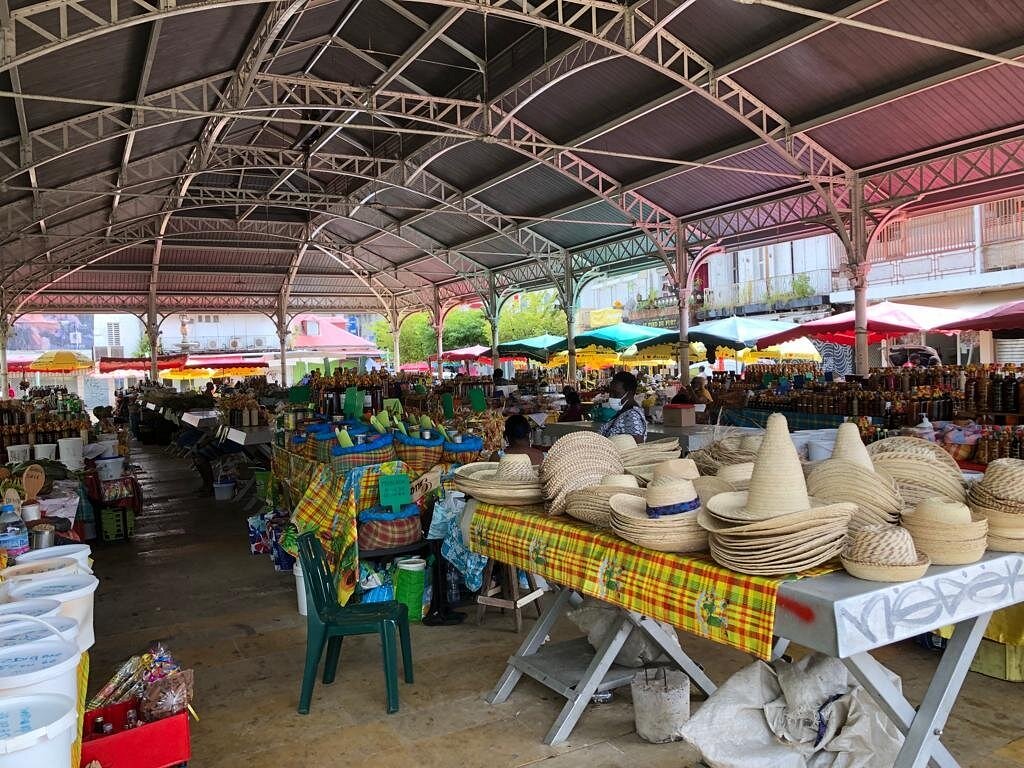
Saint-Antoine market has a lively selection of Creole and Guadeloupe food, and the colorful outdoor markets are fun to visit for their atmosphere and their merchandise, with many vendors dressed in vivid colors like their tropical fruits. Fishermen sell their catch at the harborside market, which includes spices, flowers, crafts, and apparel.
6. Plage de Grande Anse, Basse Terre

Plage de Grande Anse is a palm-lined beach near Deshaies on Basse-Terre’s northeast coast. One of Guadeloupe’s most gorgeous beaches. The golden-sand beach, surrounded by verdant headlands, is over a kilometer long and has many shaded trees.
Plage de Grande Anse is a fantastic beach for walking and swimming, but windy days can be difficult. The sea floor dips abruptly beyond the shoreline, making it unsafe for young children to swim.
Rental kayaks let you explore the mangrove-lined lagoon behind the beach. Try the crepes and other refreshments at the cafés and food trucks near the parking lot after a morning of sunbathing and swimming.
North of Grande Anse, Plage de la Perle is a popular beach with cafés and bathrooms near Deshaies. It is quieter.
7. Guadeloupe National Park, Basse-Terre
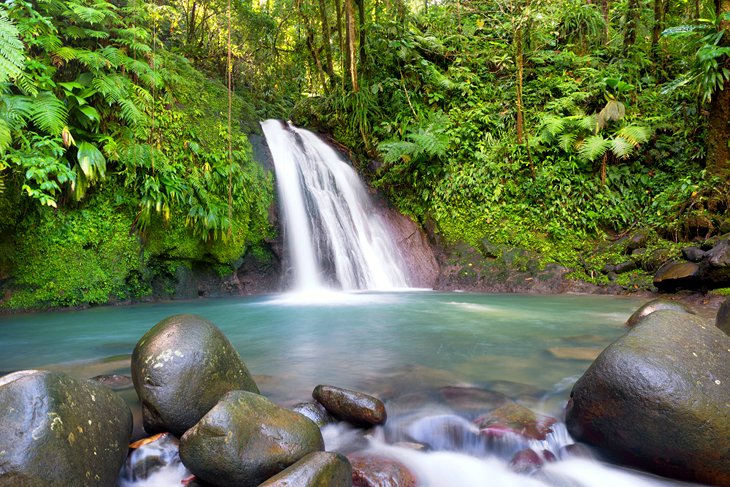
Address: Habitation Beausoleil Montéran, 97120 Saint Claude
Nature lovers of all kinds will enjoy Guadeloupe National Park. A UNESCO World Biosphere Reserve, the park gets over a million tourists annually. Attractions include 300 kilometers of hiking paths, La Soufrière volcano at 1,467 meters, Col de la Matéliane at 1,298 meters, and a variety of plants and animals, including 100 orchid species and 11 bat species.
Black woodpeckers, pearly-eyed thrashers, and Lesser Antillean pewees live here, offering birdwatchers diversity.
Route de la Traversée (D23) offers a scenic park excursion. This magnificent trans-coastal route winds through a tropical mahogany and bamboo jungle. Lookouts, picnic sites, jungle waterfalls, and Maison de la Forêt’s staffed roadside center exist along this route. For a refreshing swim, visit Cascade aux Ecrevisses, a little cascade into a pond.
Hiking La Soufrière volcano in Guadeloupe is unique. Another park trail leads to Les Chutes du Carbet, a series of waterfalls on the volcano’s lower slopes.
8. Marie-Galante Island
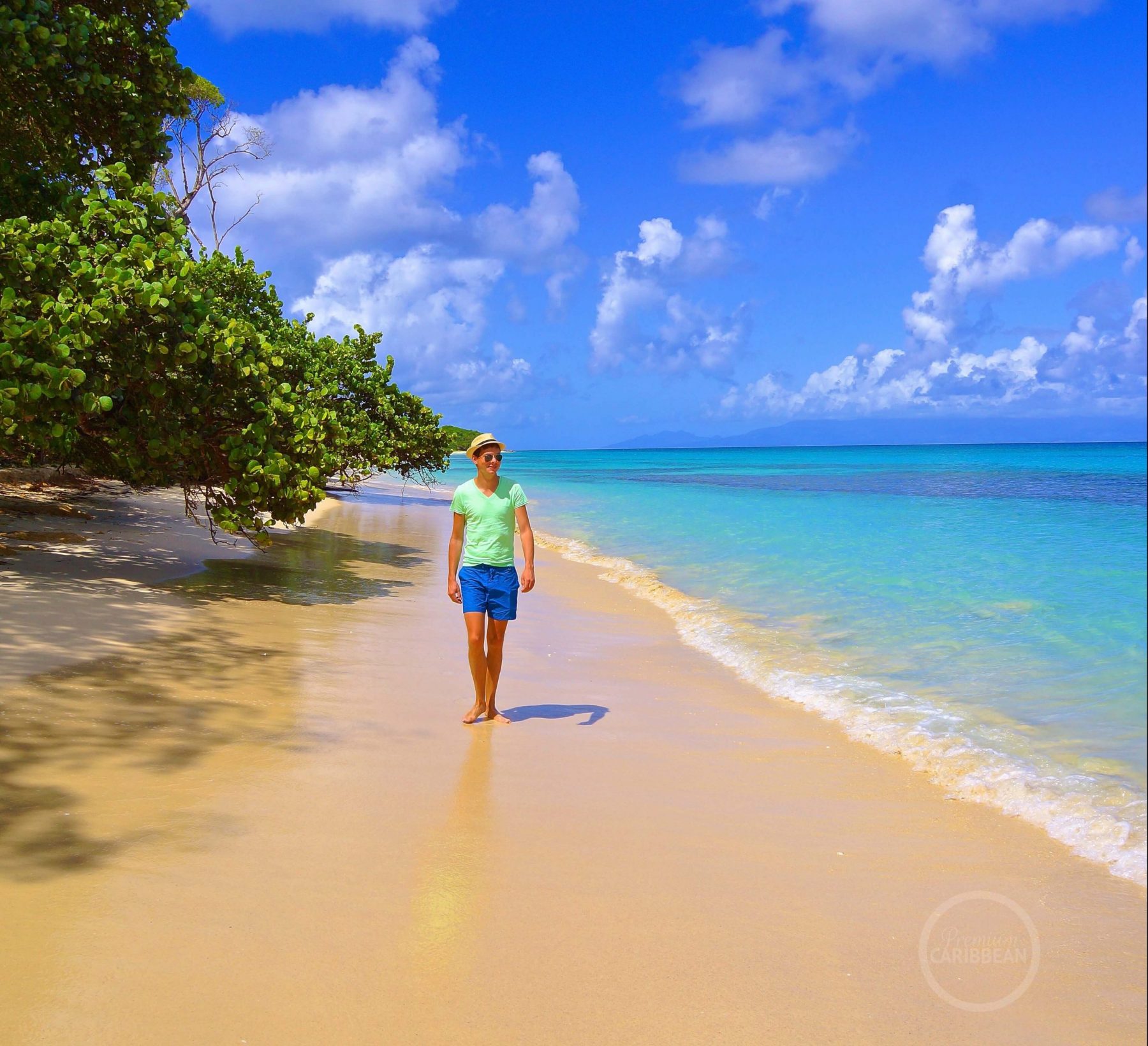
Marie-Galante, a flat, round island with beautiful beaches, is called the Big Pancake by its residents. Windmill ruins dot the island, where sugar farming and tourism are the main industries.
Marie-Galante is great for sunbathing, swimming, and hiking, and checking out local activities is fun.
Château Murat, Guadeloupe’s largest sugar plantation, was built in 1839. Its eco-museum celebrates Marie-Galante’s arts and culture, especially its sugar business. A restored colonial palace, windmill tower, sugar industry ruins, and medicinal garden are all on site.
The island’s nicest beaches are Feuillere Beach and Anse Canot, with pillowy white sand and turquoise water.
9. La Pointe des Châteaux, Grande-Terre
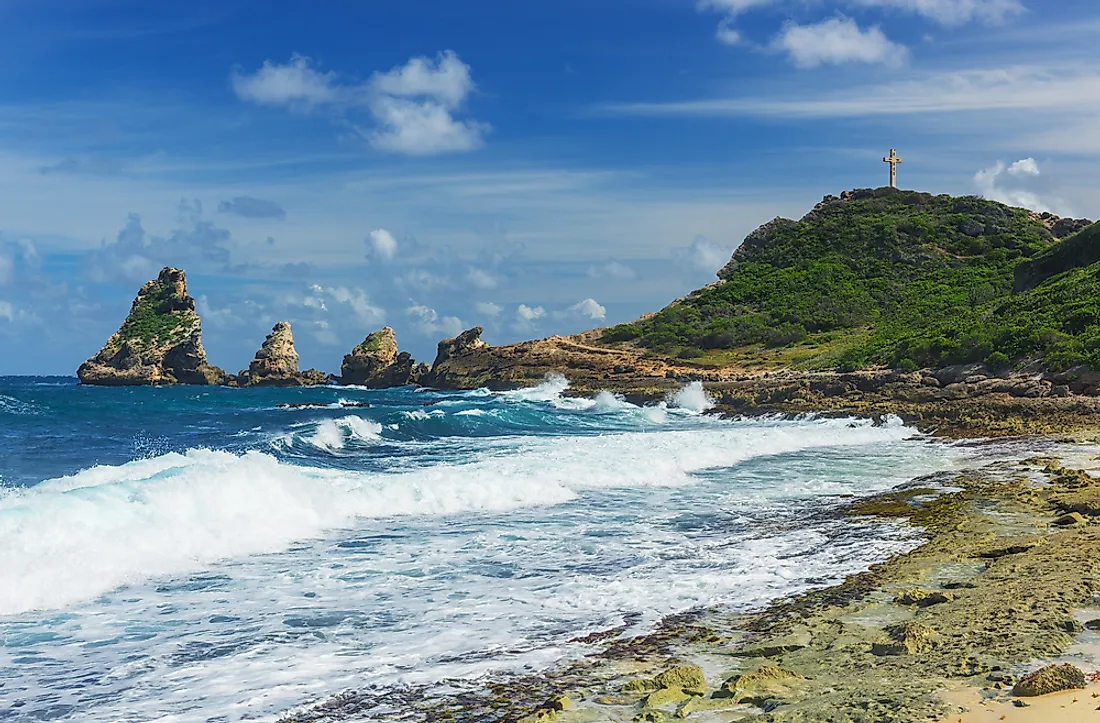
Photographers love La Pointe des Châteaux. Castle-like rock formations protrude out of the sea near Grande Terre’s easternmost isthmus. The windy, wave-battered point has a rustic Brittany beauty.
From the settlement, a botanical trail leads to excellent black rock views. The islands of La Désirade, Petite-Terre, and Marie-Galante are visible from here.
A wild, wind-whipped white-sand beach is nearby. Swim at your own risk in the rough surf. This attraction can get crowded with cruise ship guests, so prepare ahead for a peaceful, romantic couples’ escape.
10. Zoo de Guadeloupe, Parc des Mamelles, Basse-Terre
Address: Route de la traversée, D23

Zoo de Guadeloupe, a hilltop garden and natural reserve on the Rivière aux Hérbes, borders Guadeloupe National Park. Many rare and endangered animal species are among the 85 featured here.
The setting makes this zoo special. Hiking routes and hanging bridges through the tropical rainforest make you feel like you’re in the wild watching animals.
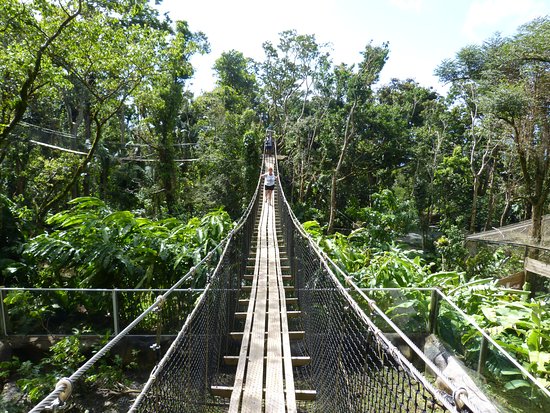
You’ll see tortoises, raccoons, monkeys, jaguars, snakes, and parrots, as well as luscious palms, plants, and tropical blossoms. Rope bridges give stunning mountain views.
11. Mémorial ACTe, Grande-Terre
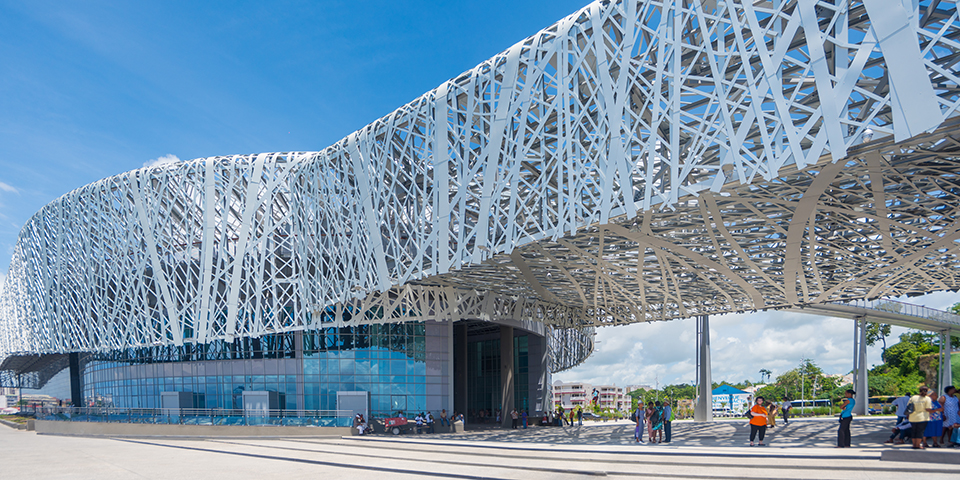
Address: Darboussier, 97110, Pointe-à-Pitre
This museum is essential for comprehending Guadeloupe’s history and global slavery and colonialism.
Building is unmissable. One of Pointe-a-Pitre’s greatest attractions, the distinctive monument on the shoreline has a crisscrossed metal top on a black granite base. The building’s colourful lights reflect on the water at night.
Mémorial ACTe covers slavery from plantation slavery through post-abolitionist times to the present. Multiplelingual audio guides enhance the compelling exhibits, and temporary exhibitions show Caribbean artists’ views on slavery in painting, sculpture, video, and photography.
Add this to your cruise itinerary at Guadeloupe—it’s a short walk from the ship terminal—and allow at least two or three hours to see all the exhibits.
12. Terre-de-Haut Island, Les Saintes
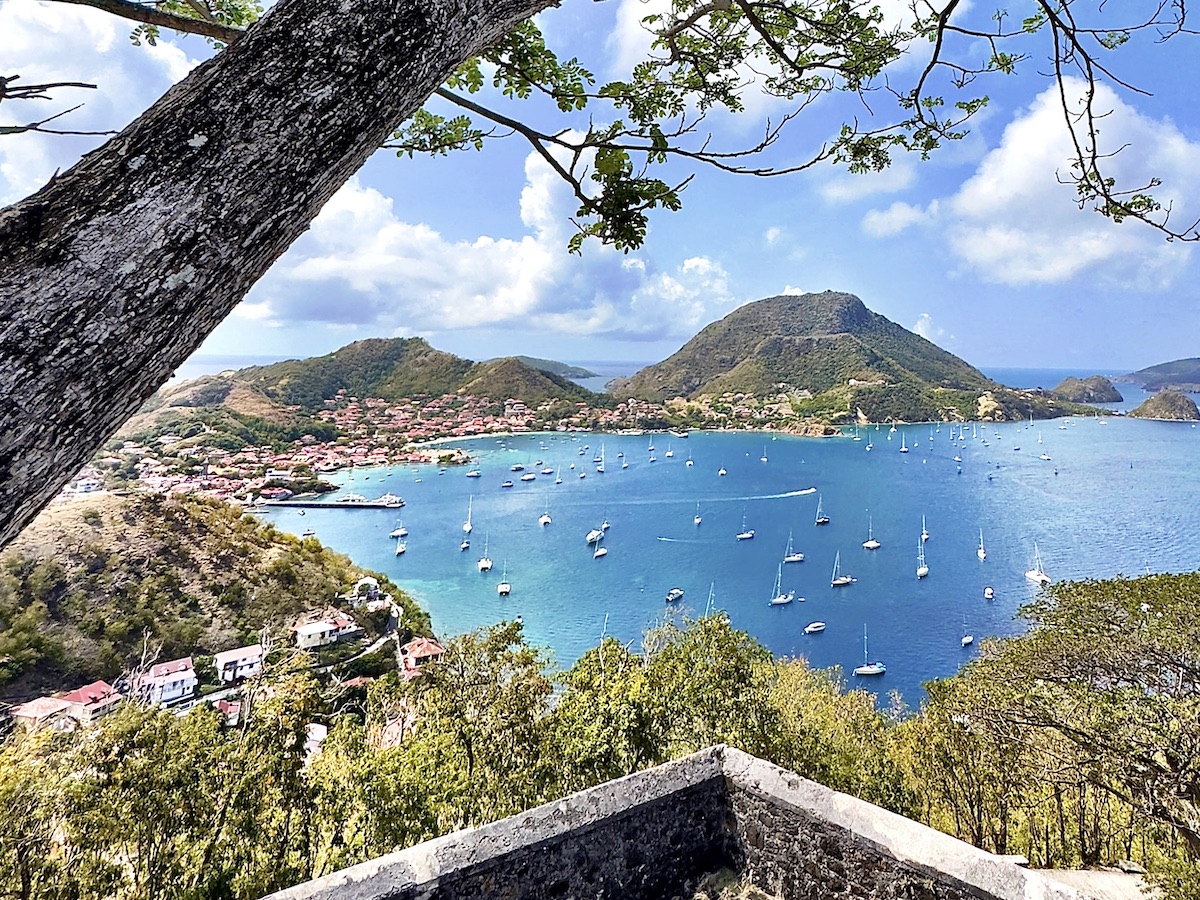
Les Saintes’ eastern island, Terre-de-Haut, is more European than Terre-de-Bas. Since the climate and topography were unsuitable for sugar production, fishermen settled there.
Today, the pastel-colored buildings and vividly painted fishing boats (saintoises) make for beautiful photos, and the island is a calm spot to explore and experience local life.
To explore Bass-Terre, most visitors take the 30-minute ferry from Point-a-Pitre or Trois-Rivière and rent a scooter or golf cart.
The island’s largest settlement, Bourg des Saintes, has “Sugarloaf” volcanic hill overlooking a curving blue beach with white sand. European-style residences with whitewashed walls, red-tile roofs, and tropical flower gardens. After exploring the hamlet, visit a boulangerie for a treat.
If you want to relax on the beach, Plage de Pompierre features picnic seats and swaying palms, whereas Crawen is wilder. The 17th-century Fort Napoléon, with its museum and Exotic Garden, overlooks the bay and is a popular tourist attraction.
From Terre-de-Haut village, Morne du Chameau, the island’s highest point, takes two hours to climb. Fort Joséphine’s remnants are on Ilet à Cabrit, a small island across the water.
13. Plage du Souffleur, Grande-Terre
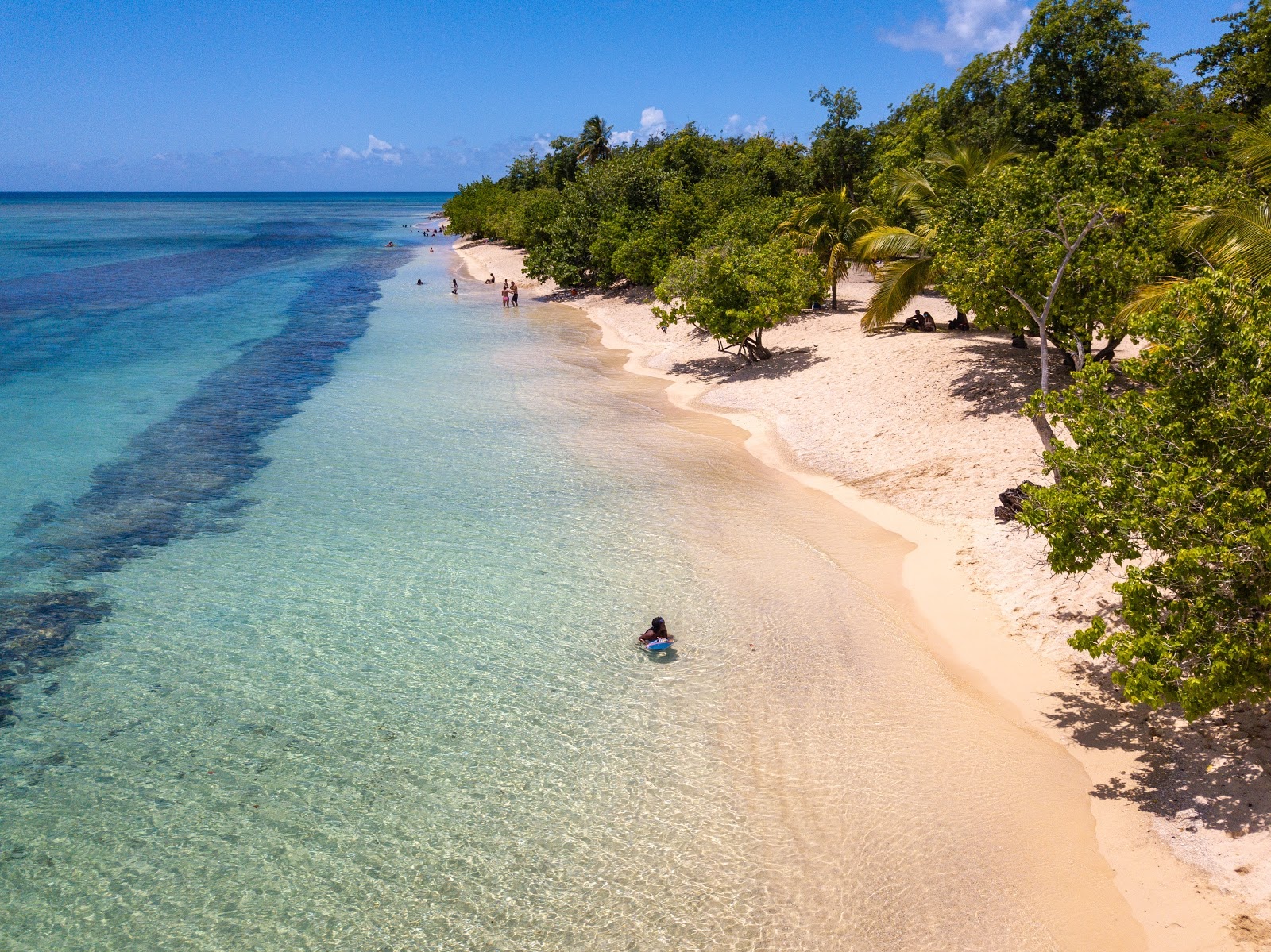
Grande-Terre’s Plage du Souffleur, in Port-Louis, a little fishing community on the northwest coast, is one of its most beautiful beaches. This beautiful length of white sand and azure sea is lined with sea grape bushes and coconut palms, providing shade for your towel.
Some good body surfing waves and quiet snorkeling are possible here. Food trucks provide Creole food and drinks.
Brightly painted wooden buildings and old iron lampposts make Port-Louis cheerful. On clear days, Pointe de la Grande Vigie, Guadeloupe’s northernmost point, offers panoramic views of surrounding islands after a 20-minute journey through desert vegetation.
14. Grand Cul-de-Sac Marin Natural Reserve Boat Tour
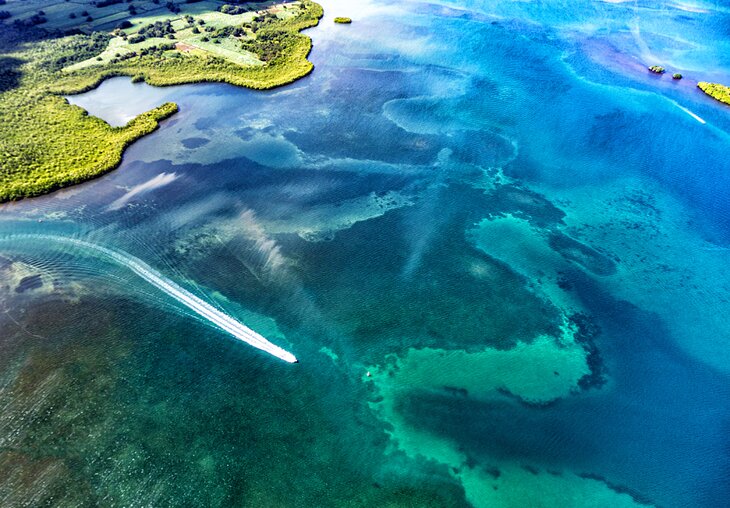
Grand Cul-de-Sac Marin Natural Reserve (Réserve Naturelle du Grand Cul-de-Sac Marin) is an excellent site to take a boat trip of Guadeloupe’s wild side.
This 15,000-hectare reserve has mangrove forests, mudflats, coral reefs, seagrass meadows, blue lagoons, and tiny islets. It includes transitional zones for sustainable human activity. It is part of the UNESCO-listed Guadeloupe Archipelago Biosphere Reserve with Basse-Terre National Park.
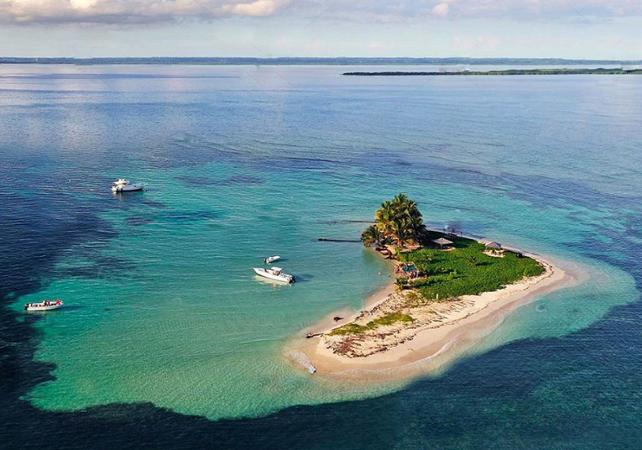
The reserve’s various ecosystems are home to many species. Marine animals include turtles, sea urchins, huge sponges, and many fish. Birders can see kingfishers, herons, pelicans, and frigates.
Visit the reserve on a guided boat excursion. Touring the mangroves and Moustique River, the Blue Lagoon excursion includes snorkeling on coral reefs and a stop at the tiny white-sand island of Ilet Caret, surrounded by blue sea. Request an English-speaking guide if you don’t speak French.
15. Terre-de-Bas Island, Les Saintes
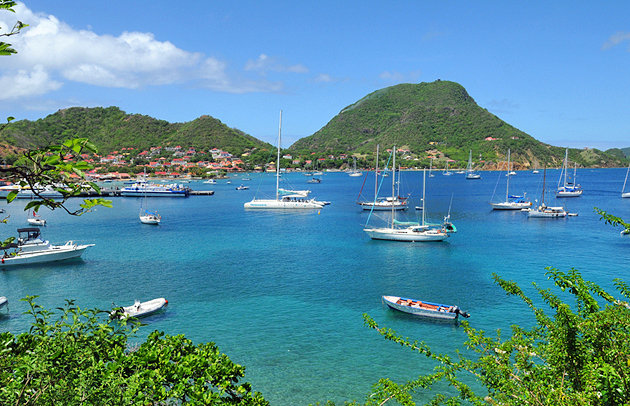
Terre-de-Bas, Les Saintes’ western island, is larger but quieter than Terre-de-Haut. One of the most wild and natural islands in Guadeloupe, it has little fishing communities, swimming beaches, and beautiful hiking routes.
Grande Anse on Terre-de-Bas has a modest 17th-century chapel, a lovely cove, and a beach with snorkeling and swimming cottages. The 273-meter Grande Montagne promontory is also accessible by trail.
Gros-Cap is Terre-de-Bas’ major settlement, including a ferry landing, restaurants, lodging, and road and hiking trailheads. Most people take a day ferry from Terre-de-Haut Island.
16. La Soufrière Hike, Basse-Terre
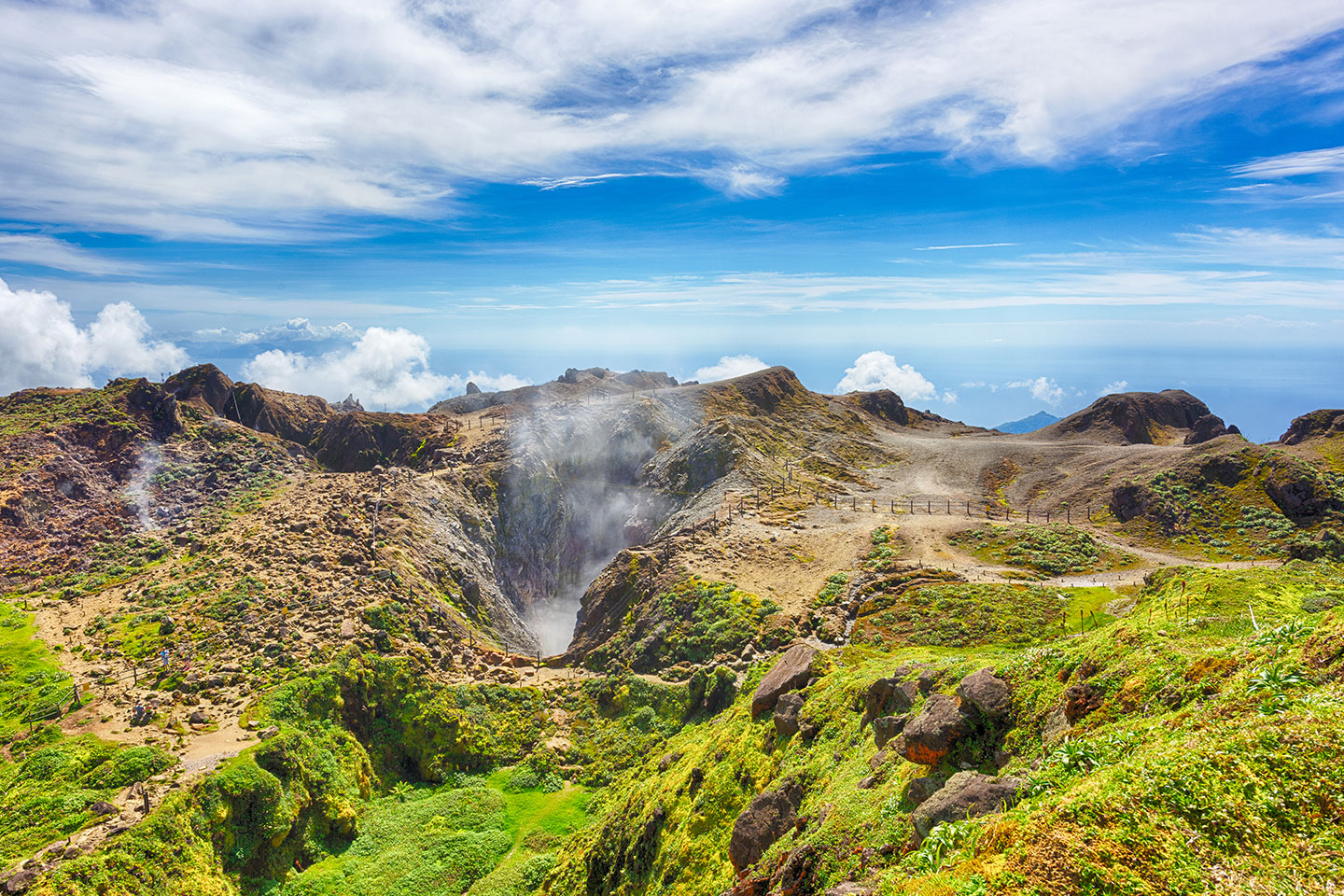
Address: Habitation Beausoleil Montéran, 97120 Saint Claude
Walkers can climb La Grande Soufrière, the Lesser Antilles’ tallest active volcano, on the Chemin des Dames trail. If the weather is clear, this two-hour arduous trek to the massif’s highest elevations gives panoramic vistas.
The route offers a variety of strange sights. The triple cascade of Chutes du Carbet runs down the eastern slope of La Soufrière massif from 115 meters, and hot springs, mud pools, and fumaroles dot the volcano’s barren, black sides. Lookouts offer falls views.
The walk to Etang As de Pique leads to one of the greatest highland lakes produced in volcanic craters surrounded by verdant hillsides.
This climb demands sturdy boots, plenty of water, and moderate fitness, making it unsuitable for families. Bring a rain jacket.
Interesting fact: The volcano erupted eight times since 1660, recently in 1977.



